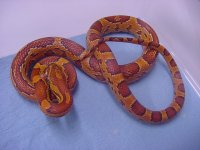-
Hello!
Either you have not registered on this site yet, or you are registered but have not logged in. In either case, you will not be able to use the full functionality of this site until you have registered, and then logged in after your registration has been approved.
Registration is FREE, so please register so you can participate instead of remaining a lurker....
Please be certain that the location field is correctly filled out when you register. All registrations that appear to be bogus will be rejected. Which means that if your location field does NOT match the actual location of your registration IP address, then your registration will be rejected.
Sorry about the strictness of this requirement, but it is necessary to block spammers and scammers at the door as much as possible.
You are using an out of date browser. It may not display this or other websites correctly.
You should upgrade or use an alternative browser.
You should upgrade or use an alternative browser.
oketee, how to tell?
- Thread starter gekko1
- Start date
Susan
Go Ahead, Make My Day!
NOPE.
There are 2 "types" of Okeetee conrs...true locality Okeetees (and they may not have the color associated with it) and then the color variation Okeetee...dark saddles, bright orange background, large black bands around the saddles. These can turn up anywhere. They are all Elaphe guttata guttata, corn snakes.
There are 2 "types" of Okeetee conrs...true locality Okeetees (and they may not have the color associated with it) and then the color variation Okeetee...dark saddles, bright orange background, large black bands around the saddles. These can turn up anywhere. They are all Elaphe guttata guttata, corn snakes.
Ken Harbart
New member
Well, technically they're now just Elaphe guttata, with no recognized subspecies.
Serpwidgets
New member
Well, consider that (from what I've heard) there are plenty of cornsnakes native to the region which are quite ugly, and the fact that when most people go to buy an "Okeetee" cornsnake they are looking for a specific appearance.gekko1 said:so if someone has a corn that looks like an oketee they can say its an oketee? doesn't sound right peoples.
Personally, I don't care at all where its ancestors are from, I just want to know what it looks like. Coming from that region doesn't guarantee its appearance.
There's also the fact that (again, from what I've heard) none have been collected from the hunt club for some time now, so any "okeetee locality" corns you might see for sale are actually the product of human-selected breeding. This removes the factor of that specific locality's selection process and IMO it is not possible to buy any "true" cornsnakes from that locality anymore.
Also, as Rich Z has said, where is the border that determines this locality? And if it's crossing the borderline at the time it is collected, is it or is it not an "Okeetee" cornsnake? Does it depend on which direction it is crawling at that time?
So, which ones are the "real" Okeetees? Can you come up with any kind of test to, without knowing beforehand, determine amongst a bunch of normal corns which are the "real" Okeetees and which are not?
Kat
I'm talkin' to YOU.
You know, I've found out that just about everyone has their own idea of even what Okeetee locality is... some say it's locality-collected only (offspring of collected snakes don't count), some say it's from locality stock only (that is, all ancestors were locality okeetees), and I've heard people say that a snake having only some of its ancestors from snakes collected in the Okeetee Hunt club counts as Okeetee too...
But yeah, there is a version of Okeetee out there that's based on appearance rather than ancestry. You could have a snake that never had any ancestors that came from anywhere near the Okeetee Hunt club, and yet if it looks like an Okeetee morph, then it is considered an Okeetee morph. And even on this you'll find some disagreement...
I guess it's just one more thing to ask questions on before you buy, depending on what sort of Okeetee you're interested in.
But yeah, there is a version of Okeetee out there that's based on appearance rather than ancestry. You could have a snake that never had any ancestors that came from anywhere near the Okeetee Hunt club, and yet if it looks like an Okeetee morph, then it is considered an Okeetee morph. And even on this you'll find some disagreement...
I guess it's just one more thing to ask questions on before you buy, depending on what sort of Okeetee you're interested in.
Matt L said:All this talk....but nothing to talk about...Okeetee pic
this is what my corn looks like, orange with red saddles and thin black outlines. i wish i had a camera.


